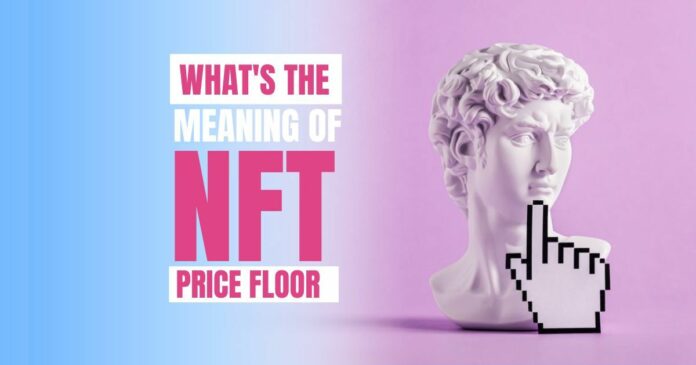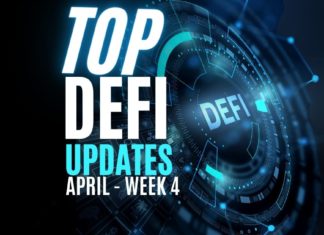If you are new to the NFT space, you might be confused about how NFTs are valued. Especially since NFTs, or non-fungible tokens, are unique and are of limited quantity. They are not like traditional assets. Nor can we evaluate them like other cryptocurrencies. There’s no definitive rule book on how much an NFT can demand.
A vital metric that we use to evaluate NFTs is their floor price. Simply put, the floor price of an NFT collection is the lowest price of an NFT within the collection.
Despite the fundamental differences between fiat and digital assets like cryptos and NFTs, much of the present crypto market has strong parallels with stock markets. As such, crypto exchanges logically appropriated different jargon from established markets for the convenience of traders and investors. NFT marketplaces took a similar approach when they embraced terms like Floor Price from commodity markets and auction houses.
And, unlike traditional markets where a government or another authority imposes the floor price on the product, the person who owns the NFT sets the floor price of the NFT collection.
What Is the Floor Price of an NFT?
The NFT floor price is the minimum amount required to pay to own the NFT. The floor price is updated in real-time, depending on the NFTs sold or new listings in the collection.
An easy way to infer an NFT floor price is to take the lowest-priced NFT in a collection. Using Doodles NFT as an example, the lowest listed price in OpenSea is 7.33 ETH. Consequently, the Doodles NFT collection has a floor price of 7.35 ETH.
Interesting last 24h: huge sales and floors going up significally in many projects😲 pic.twitter.com/BQvdmlCdSt
— NFT Price Floor (@nftpricefloor) September 23, 2022
Who Sets the NFT Floor Price?
Any NFT holder of the collection can decide the floor price when they list the NFT for sale at a price cheaper than all other sellers within that given project.
But things are different at the mint of an NFT collection. It is the creators or the artists who set the floor price of NFTs on the mint. This floor price is otherwise known as the mint price. Once the mint is complete, the holders will decide the floor price when listing it on secondary marketplaces.
The introduction of NFT floor price did make evaluating NFTs a tad bit easier, but to reap the benefits of the pricing structure, the NFT space must be regularly monitored. NFT projects’ floor costs could vary based on even the tiniest amount of community activity.
How Is NFT Floor Price Calculated?
Besides the economic aspects of users needing liquidity or cashing out of the collection, other factors can also influence the value of an NFT and, ultimately, its floor price:
- NFT Rarity – Scarcity drives up the value as the investors love the idea of having something no one else has. The collections with unique or rare NFTs will have a higher floor price and vice versa.
- Utility – Some NFTs can provide real-world utilities and perks. Since potential buyers and investors prefer NFTs with these perks, the floor price will subsequently increase.
- Social Proof – Widely popular collections or collections with celebrity endorsements will have a higher floor value.
- Ownership History – NFTs created by big brands/reputed individuals or those with notable previous owners can fetch higher NFT floor prices than those without an impressive background.
- Liquidity – Liquidity refers to the ease with which an NFT can be purchased or sold for cash within the network. The NFTs with high liquidity are more sought after and have higher floor prices.
- Tangible Perks – Some NFTs can tether to physical items and appeal to more potential investors. The combination of tangible and intangible forms often positively impact the floor price.
- Appreciation in Value – Holders can raise the floor price if they expect an increase in the future price. They might list their NFT for a higher price or remove it from the market. A supply squeeze results from fewer NFTs in a collection available for sale on the market. It raises demand and ultimately increases the floor price.
How Does NFT Floor Price Increase?
Several causes are responsible for NFT floor price fluctuations:
- Change in Demand – The demand for an NFT can change depending on various factors. Increased demand can cause the floor price of the collection to shoot up, while a minimal one will compel the market to lower the floor price.
- New Perks or Utilities – Investors always prefer collections with utilities. The NFT collections without them will deteriorate over time and lose the floor price. On the other hand, the introduction of new perks/utilities or the success of the existing ones can increase the floor price.
- Collaborations – Endorsements from influential personalities or partnerships with other projects can boost the project’s prospects. It will result in an influx of investors and promote further demand. In the end, the floor price of the project will rise.
- Community – Community is another vital aspect of an NFT project. It is a crucial element that determines the NFT floor price. If the community is not loyal, they can dump the project, and the floor price will eventually plunge. If the community is faithfully committed to the project, they will be hesitant to sell what they have and will try to acquire more NFTs in circulation. The low supply and high demand will propel the floor price higher.
Popular Collections 24h on @MagicEden
📈 @zombiesNFT : 3.5 to 5 $SOL
📈 @y00tsNFT : 114 to 116 $SOL
📈 @DeGodsNFT : 275 to 300 $SOL
📈 @ABC123Community : 22 to 24 $SOL
📈 @okaybears : 40 to 50 $SOL
📈 @DegenApeAcademy : 52 to 75 $SOL#SolanaNFT #FloorPrice #NFTs #NFTCollector— Crypto Brains (@CryptoBrainsVIP) October 27, 2022
It’s also possible for artificial volatility in the market. The market can be manipulated by influential individuals or by project creators themselves.
“Sweep the floor” generally refers to buying NFTs of a collection in bulk. It applies to both the NFT creators and the traders. When NFT creators “sweep the floor,” they purchase all their NFTs at the floor price.
NFT Floor Price Tracking
Although not the only metric, the floor price is, without a doubt, the first metric that any NFT trader scrutinizes before buying an NFT. Marketplaces often calculate only the floor price of the listed NFTs on their platform. There might be price differences between different marketplaces and potential arbitrage opportunities. You might have to rely on floor price trackers for this. Some NFT floor price trackers are listed below:
A fresh, uncluttered UI with the ability to group by wallet and collection
Easily toggle alerts on and off without having to recreate them
You can also easily update existing alerts. pic.twitter.com/TLiCssMSwc
— icy.tools – NFT Tracking & Alerts (@icy_tools) October 21, 2022
Conclusion
The floor price is one of the core metrics used to gauge an NFT collection’s worth. Nevertheless, we must never rely solely on it. Given the ecosystem’s volatility, estimating the fair value of NFTs is a daunting task. The rarity rating, market response, utility, volume, ownership history, and other criteria must be accounted for when determining a fair value of an NFT.
⬆️ For more cryptocurrency news, check out the Altcoin Buzz YouTube channel.
⬆️ Check out our most up-to-date research, NFT and Metaverse buy, and how to protect your portfolio in this market by checking out our Altcoin Buzz Access group, which for a limited time, is FREE. Try it today.




























